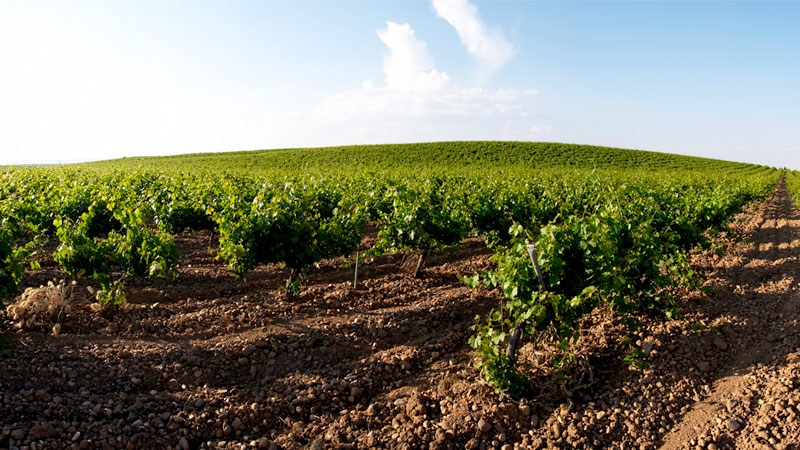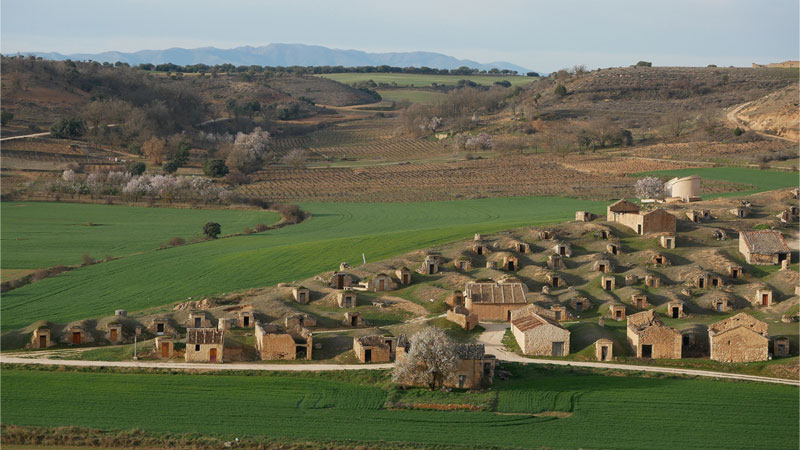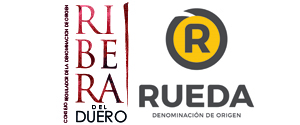
We can all feel it: The air is getting crisp, the leaves are starting to turn and somehow it’s already time to figure out what wines to stock for the holidays. This year, holiday festivities promise to look very different, will limit travel for many, and will mostly take place at home. Celebratory family meals could be a little smaller, end-of-year soirées might be virtual, and holiday gifts will probably go by FedEx rather than in person, but what hasn’t — and won’t — change is the desire find the right bottle to ring in the cheer and, even more than ever, escape a little. This year, help your customers find celebratory wines from the rugged Spanish countryside and the twin wine-growing regions of Ribera del Duero y Rueda. With Rueda specializing in white wines made from Verdejo, in a variety of styles, and Ribera del Duero known for its pure expression of Tempranillo, there is plenty to choose from and great value to pass along to whoever walks into your store. We reached out to Spanish wine aficionados, sommeliers, and retailers across the country to get a sense of the value these regions represent on the sales floor — and to get some bottle recommendations, too.
D.O. Rueda
Rueda produces lively white wines from Verdejo. Wine production dates back to the 12th Century when King Alfonso VI offered lands to monasteries. The D.O. was established in 1980 and today, Verdejo from Rueda is the most widely consumed white wine in Spain. Rueda’s hot, dry summers make it ideal for these aromatic white wines with balanced acidity. Here, rocky soils, a mixture of limestone and clay, produce Verdejo grapes with medium-to-full-bodied flavor. Sandy soils are also common, and are an optimal composition for old vines. Primarily harvested at night to optimize cooler temperatures, prevent oxidation, and help retain acidity, the grapes are often fermented in stainless steel or concrete to harness the bright, fruity notes in the wine. Winemakers are also aging grapes on the lees or in oak barrels, offering a variety of aromas and flavor profiles to Rueda favorites, increasing the endless possibilities of pairing food with the wines. These are superb bottles to recommend to customers who usually go for Pinot Grigio and Sauvignon Blanc.
“Verdejo from Rueda has great texture and a rich fruit character with a hint of minerality,” says Larry Reiter, president of Columbus Wine and Spirits in Amityville, N.Y., explaining it can enhance foods with complex flavors and spice, yet is subtle enough for fall’s many feasts. “On Thanksgiving, it would shine next to the traditional savory side dishes, as well as turkey,” he says. It will be an ideal for pairing with oyster mushroom stuffing, tart cranberry dishes, and roasted herbed potatoes. He often recommends Bodegas Mocén Selección Especial, for its broad, balanced mouthfeel. Other wines in this style from established producers are very affordable, such as the tropical fruit-inflected bottling from Marqués de Riscal, or the fragrant, grapefruit-scented Marqués de Cáceres.

And while Nanette Rapuzzi, a West Coast sommelier often suggests Rueda wines as an ideal aperitif (the wines tend to be fairly restrained when it comes to alcohol), she also notes that some producers use oak fermentation and extended skin contact, adding layers to the wine. “If you’re looking for more complexity, these wines are excellent choices,” she adds, and the price is quite reasonable, too, often less than $40 a bottle. With over 70 wineries in Rueda, you can find exceptional oaked styles from various producers such as Bodegas Shaya, Bodegas Naia, or Jose Pariente.
Offering a surprising added benefit, Benjamin Buckley, director of operations at The Core Club in NYC, says “Rueda whites are perfumed and aromatic, giving even non-wine enthusiasts some easy flavor picks and conversation points.”
Ribera del Duero
On the red wine side of things, Ribera del Duero is one of the highest-altitude wine-producing regions in Europe. It’s located to the east of Rueda, just two hours north of Madrid along the Duero River on the elevated plains of Spain’s Castilla y León province. Its extreme climate — frigid winters, blazing summers and dramatic day-to-night temperature fluctuations — as well as its rocky terrain along limestone cliffs and mix of soil and exposures, offer a singular introduction to Tempranillo, Spain’s most widely planted red grape. Ribera’s Tempranillo is rarely blended with other varietals, making Tempranillo wines from this region incredibly unique and some of the purest expressions of Tempranillo. Tempranillo vines have thrived in Ribera del Duero since the ancient Phoenician settlements and today produce intense, medium-to-full-bodied wines that can pair widely with seasonal holiday foods, from lamb and beef and roasted winter vegetables to dark chocolate cake. Ribera’s Tempranillo also features complex notes often compared to winter fruit and warm spices, making it an ideal companion for after-dinner drinks around the fire, or as an elevated holiday treat for loved ones.

“A great bottle of Tempranillo is a fantastic gift for the lover of robust, textured wines,” said Sommation Live contributor Brian Long, who recommends the wines from the “Golden Triangle” area, with producers such as Vega Sicilia or Finca Villacreces. “Their seductive fruit and supple tannins pair well with holiday favorites like turkey, stuffing, or roasted game,” he says. “If you want to really treat yourself or are looking for a special gift, go for the Unico Gran Reserva bottling if you’re down for a proper celebration.” On the more affordable and accessible side, he recommends Antídoto, a modern expression with notes of oak tannins and ripe, juicy fruit that retails for around $20. It hails from the highest-elevation, farthest corners of the region, in the Soria area, where many of today’s old-vine, fresh-fruit Tempranillo wines are produced.
Rodolfo Rubalcava of International Distributing Group often compares Tempranillo with Cabernet Sauvignon when describing it to his retail customers, saying its juicy, full-bodied flavor offers the perfect proportion of fruit (plums and berries), tannins, and acidity. He looks to bottles from producers like Viñedos Valduero, Bodegas Montebaco, and Viña Solorca.
Understandably, customers will also be looking for bubbly this time of year. Rueda has unexpected offerings in that realm, too: traditional-method sparkling wines from Verdejo. For New Year’s Eve, Reiter points his customers to the authentic and celebratory Bodegas Yllera Cantosan light, crisp 100 percent Verdejo sparkler.
For customers celebrating casually or those hosting more formal parties, the wines of Ribera del Duero y Rueda can offer the perfect, flavorful companions.
Click the “Buy Now” button below to try wines from Rueda y Ribera del Duero, and get 10% off your purchase using code RIBERARUEDA!
This article is sponsored by D.O. Ribera del Duero and D.O. Rueda.


